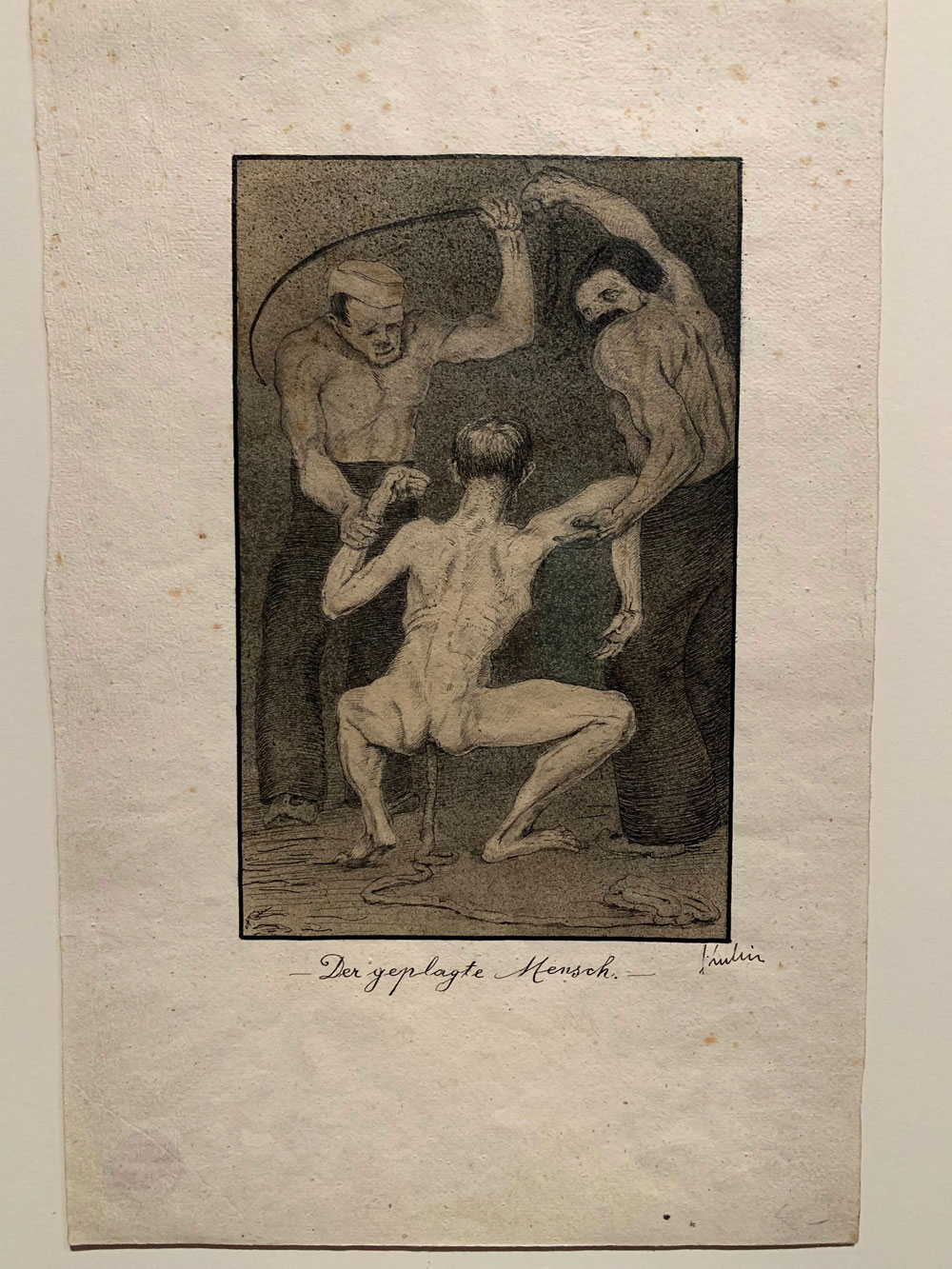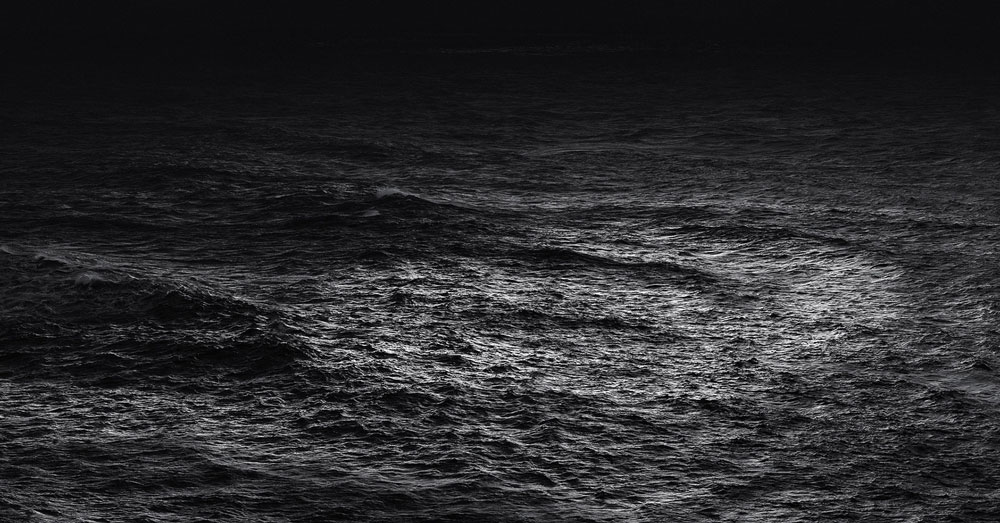Phantastisch! Alfred Kubin und der Blaue Reiter | Lenbachhaus
Alfred Kubin had a pretty standard upbringing, when you consider his predilection for the grotesque. Bouncing between mental health problems, a sexual encounter with a pregnant woman when he was 11, and a (failed) suicide-by-shotgun attempt on his mother’s grave, he found lasting fame just after graduating with sickly macabre little pen-and-ink drawings, depicting torture, devils, and death. There’s a great selection on show at Phantastisch! Alfred Kubin und Der Blaue Reiter, an exhibition currently running at the Lenbachhaus in Munich.
I found the work pictured below, Macht (or, Power), the most disturbing of all. A huge powerful sea lion triumphantly lords it over a huge pile of skulls - bird, mammal and possibly human. A mass murderer, now at the top of the heap. And proud of it.

The first couple of rooms of the exhibition are much the strongest. They deal with his pen-and-ink drawings, made between the end of the 19th century and 1904.
Kubin’s story was that he was inspired to draw these scenes in visions, which were themselves inspired by the etchings of Max Klinger. He has a more famous precedent in Goya, who also painted from visions. And the Austrian artist’s drawings had a powerful influence on later masters of the macabre. It’s impossible not to see a hint of Tim Burton’s Nightmare Before Christmas in his strange creatures and scenes. There are also murmurings of his Expressionist peers of Die Brücke up in Berlin.
On show at the Lenbachhaus, Kubin’s sick scenes include a pair of gravediggers, a Sucking Creature - an octopus digging its tentacles into a zombified woman’s head - the shadowy desert ritual of Incantation, and A Tortured Man, looking very much like Kubin himself, squatting naked and firing out a stupendous cable of shit, as a pair of thugs beat him around the head.

But, as the title of the exhibition suggests, Kubin was associated - later in his career - with Kandinsky, Münter and the rest of the Blaue Reiter movement, contributing a few drawings to their almanac. On superficial inspection, he doesn’t seem to have much in common with their light-filled, joyfully kinetic paintings. Though he did work more in watercolours, and in a larger format, after the early pen-and-ink period.
None of Kubin’s later work - he lived quietly through World War Two, made a living as a book illustrator and died in 1959 - really has the same force as the early drawings. They define him. And, while they portray bad things, that’s no bad thing.
Other Highlights
As I was on holiday, it was a bit of an art orgy this week, so what follow isn’t quite a complete list of the shows I saw in Munich.

Best introduction to an artist that was new to me was Tom Fecht at Galerie Wittenbrink. He’s an ex engineer who took colour photographs of the sea during a total eclipse, and didn’t do any retouching after: leading to some very cool images.
I was a bit baffled by Jörg Immendorff at the Haus der Kunst, though for me any artist described as having a “close personal relationship with Joseph Beuys” is a warning sign. Immendorff’s huge acrylic paint works seemed like pure kitsch to me. Also firmly in the “do not get” column is Cy Twombly, whose world-beating collection at Museum Brandhorst seemed as po-faced and inscrutable as ever.
I enjoyed a group show of female artists’ video installations - including Pipilotti Rist’s hilarious Pimple Porno from the early 90s. This was at the Sammlung Goetz, currently located in an air raid shelter - with each cubicle shut off with a curtain and hosting a different video. Very cool! Also at the Haus der Kunst was Disjunctures, a retrospective of Indian artist Vivan Sundaram. The highlight there was the amazingly sinister 12 bed ward: bed frames with mattresses of rubber soles, lit by bare bulbs.
At the Pinakothek der Moderne I saw an informative exhibition about Ludwig II - the mad gay king with the fairytale castles - and his urban planning. Dialling back 100 years in homosexual history, there was an uninformative exhibition at the Staatliche Antikensammlungen about the 1765 death of classical scholar JJ Winckelmann: if there was any mention that his murder in Trieste was by trade, it was in German and I didn’t spot it.
At the commercial galleries, I saw Peter Wüthrich’s imaginative reformatting of book dust jackets at Susan Boutwell, and saw Welsh artist Bethan Hughes various pencil-on-paper tributes to Marcel Duchamp at a ho-hum show at Barbara Gross. Much cooler was Andreas Chatwal’s black-glazed ceramics over the road at Jo van de Loo.
At Galerie Thomas, there was an ultra-colourful Bernd Zimmer retrospective - huge paintings showing stars in various states of supernova - and some Die Brücke prints, including a few from my favourite, Emil Nolde.
I also saw the permanent collections at the state museums, and if I had to shout one work out that made me gasp in shock and awe, it’d be Rogier van der Weyden’s Columba altarpiece, just for being so breathtakingly, unbelievably intricate. I’ll have a hard time forgetting the teeming life in the medieval Flemish town in the background of this large triptych, outshining the Virgin and saints in the foreground.
Phantastisch! Alfred Kubin und der Blaue Reiter is at Lenbachhaus (Munich). 9 October 2018 - 17 February 2019